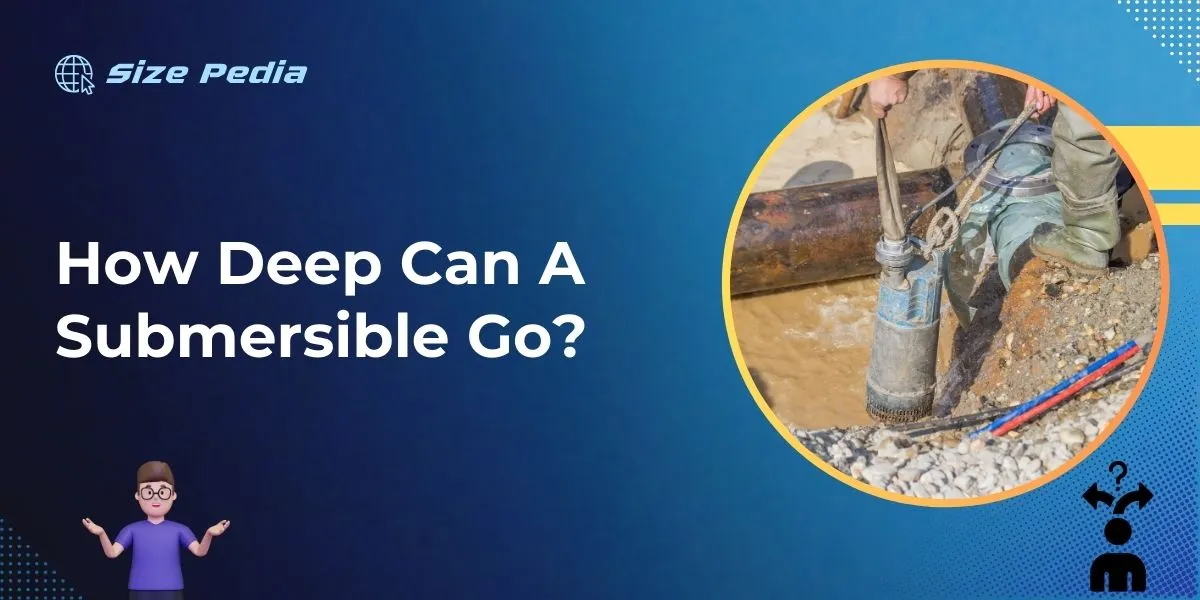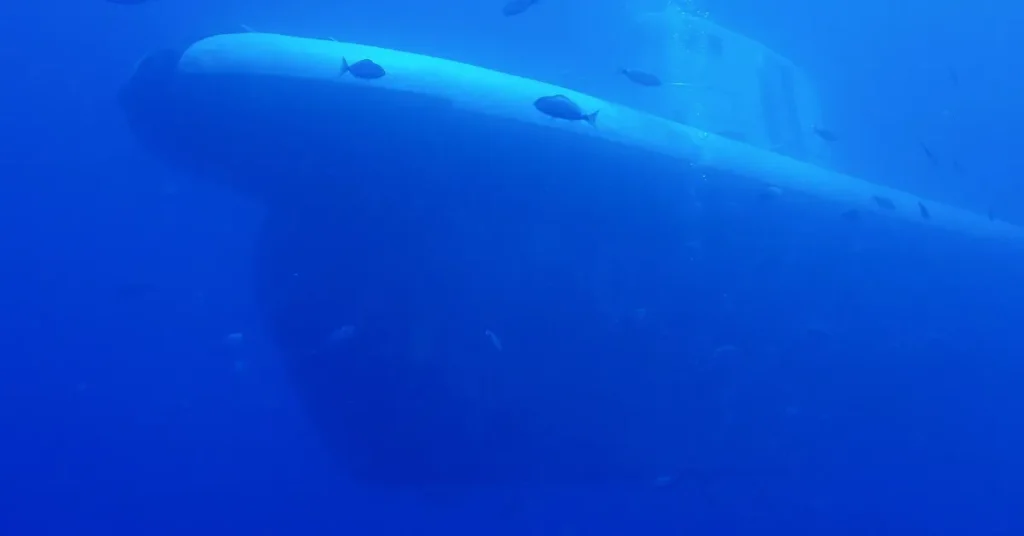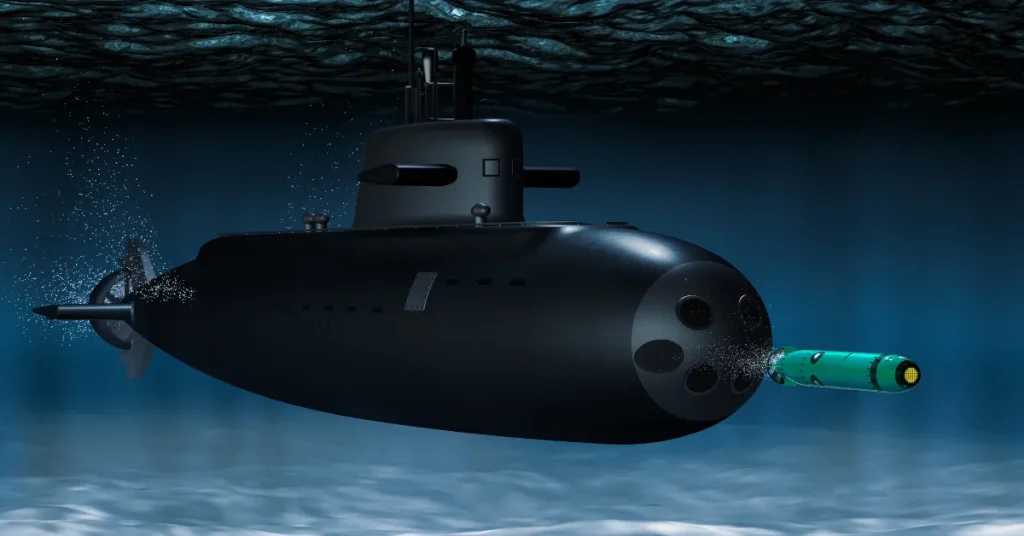Commercial submersibles can reach depths of about 6,000 meters, while specialized deep-diving submersibles have descended lower than 10,000 meters. The record for the deepest dive belongs to the DSV (Deep Submergence Vehicle) Challenger Deep, which reached just under 11,000 meters.
Exploring the ocean’s depths fascinates scientists and adventurers alike. Every descent into the deep blue sea offers the potential to uncover mysteries, new species, and geological formations hidden away from the sunlight.
The development of advanced submersible technology has enabled humans to plumb these watery depths.
Modern submersibles come equipped with reinforced structures to withstand crushing pressures, and their capabilities continue to expand as engineering solutions overcome the challenges of the abyss.
Whether for research, resource exploration, or the sheer human pursuit of discovery, these underwater vessels are critical tools.
Their design and endurance are vital in achieving milestones beneath the ocean waves, allowing a glimpse into the least accessible places on Earth.

Pushing The Boundaries: Submersible Depth Limits
Discover the depths where submersibles dare to venture.
Uncover the limits of submersible exploration.
Historic Milestones In Submersible Depth
The quest to explore oceanic depths is history-rich.
| Year | Vessel | Depth |
| 1960 | Trieste | 10,911 meters |
| 2012 | James Cameron’s Deepsea Challenger | 10,908 meters |
| 2019 | Victor Vescovo’s Limiting Factor | 10,927 meters |
Technical Challenges At Extreme Depths
Deep-sea exploration faces severe challenges.
- Pressure increases one atmosphere for every 10 meters.
- Materials must withstand crushing forces.
- Communication with the surface is complex.
Innovations in materials science and engineering are key.
Engineering Marvels: The Submersibles’ Design

The vast depths of our oceans conceal mysteries and habitats unreachable by standard marine vessels. Here, submersible technology plays a crucial role.
Pushing the bounds of engineering, these impressive devices are designed to transport humans to profound oceanic spaces. The intricacies of their design mark significant advancements in marine exploration.
Materials And Build For Withstanding High Pressure
The design of a submersible is a testament to human ingenuity. At extreme depths, the ambient pressure can crush conventional materials with ease.
Submersibles counteract this with innovative materials and advanced engineering techniques. Here’s a glimpse into the materials that make deep-sea travel possible:
- Titanium: Favoured for its strength-to-density ratio and corrosion resistance, it’s often used in submersible hulls.
- Syntactic foam: This composite material provides buoyancy while being nearly impervious to pressure.
- Borosilicate glass: For viewing ports, its high resistance to pressure changes and clarity are unparalleled.
Hull design also plays a pivotal role. Spherical and cylindrical shapes are most effective against pressure, distributing forces evenly across their surfaces. This mitigates potential stress points that could lead to a breach.
Life-support Systems For Human-operated Submersibles
Submersibles that carry humans need complex life-support systems. These craft maintain an environment where passengers can survive the deep-sea conditions. Key elements include:
| Component | Function |
| Oxygen tanks | Provide breathable air |
| CO2 scrubbers | Remove exhaled carbon dioxide |
| Thermal controls | Regulate temperature |
| Life support computers | Monitor and adjust internal environment |
These systems are designed for redundancy and reliability. Back-up systems ensure that, even if one component fails, the submersible and its occupants remain safe.
The Abyss: Deepest Points In The Ocean
The Abyss: Deepest Points in the Ocean calls to mind a world shrouded in darkness. Far below the water’s surface, light gives way to mystery, where pressure mounts and few dare to venture. These depths challenge explorers and technology alike.
Mariana Trench: The Ultimate Challenge
The Mariana Trench stands as Earth’s deepest known point. It plunges approximately 36,000 feet beneath the waves, a depth at which pressures exceed 1,000 times that of the surface. Submersibles face the ultimate test here.
- Depth: Estimated at 10,984 meters (36,037 feet).
- Location: Western Pacific Ocean, east of the Mariana Islands.
- Record: Deepest manned dive by the submersible Limiting Factor in 2019.
Other Notable Deep-sea Locations
The Mariana Trench may hold the record, but other areas of the deep-sea are equally fascinating.
| Location | Depth |
| Tonga Trench | 10,882 meters (35,702 feet) |
| Kuril-Kamchatka Trench | 10,542 meters (34,587 feet) |
| Philippine Trench | 10,540 meters (34,580 feet) |
| Kermadec Trench | 10,047 meters (32,963 feet) |
Each of these locations offers a unique glimpse into the Earth’s depths. Submersibles study these areas, gathering data important to understanding our planet’s mysterious deep-sea environments.
Scientific Discoveries From Deep-sea Exploration
The depths of the ocean remain one of the final frontiers on our planet. Submersibles dive deep into these unknown parts, uncovering secrets hidden for millennia.
The discoveries from these missions provide us with invaluable knowledge about life under the sea and the structure of Earth itself. Let’s delve into the fascinating findings from the world beneath the waves.
New Species And Ecosystems
Deep-sea explorations have revealed wonders beyond imagination. Every descent is a chance to encounter life in its most curious forms.
- Unseen Marine Life: Scientists regularly discover new marine species, expanding our understanding of biodiversity.
- Unique Adaptations: Creatures thriving in extreme conditions showcase amazing adaptations, inspiring technological advances.
- Hydrothermal Vent Communities: These bustling ecosystems, powered by the Earth’s internal heat, challenge our notions of life’s energy sources.
Geological Insights From The Ocean Floor
Not only does deep-sea exploration unveil new species, but it also provides a window into Earth’s past and present geological processes.
Samples of the seabed allow scientists to study:
- Plate Tectonics: Submersibles gather evidence of shifting plates and the creation of new seabed.
- Underwater Volcanoes: These features offer clues to planetary formation and mineral deposits.
- Ancient Climate Patterns: Sediment layers tell tales of Earth’s climate through ages long gone.
The Future Of Deep-sea Exploration

The ocean’s depths hide secrets waiting for us to uncover. The future of deep-sea exploration unlocks these mysteries.
Advanced technology plays a vital role. Exciting progress in submersibles and remotely operated vehicles (ROVs) is making this possible. Join us as we dive into the latest innovations that are redefining our oceanic quests.
Advancements In Submersible Technology
Designs in submersible technology have made leaps and bounds. New materials and engineering allow these vessels to withstand extreme pressure. These changes mean submersibles can reach depths once deemed unreachable.
- Pressure-resilient hulls are a recent development.
- Energy efficiency in battery technology has improved.
- Submersibles now feature enhanced navigation systems.
These innovations expand our underwater frontiers. They help scientists study oceanic wonders. It’s a step closer to unraveling the ocean’s deepest parts.
The Role Of Remotely Operated Vehicles (rovs)
ROVs are transforming how we explore under the sea. These uncrewed machines send back real-time data from the deep. They are our eyes and hands in places too dangerous for humans.
| ROV Feature | Advantage |
| High-resolution cameras | Capture detailed images |
| Robotic arms | Collect samples |
| Sensors and instruments | Measure ocean conditions |
ROVs help us understand life in crushing depths. They guide us to protect marine ecosystems better. This shows the unstoppable spirit of human curiosity and innovation.
FAQs About How Deep Can A Submersible Go
What Is The Maximum Depth For A Submersible?
The maximum depth a submersible can reach varies by design, but the deepest-diving manned submersible, the Trieste, descended to about 10,911 meters (35,797 feet) in the Mariana Trench.
How Does Pressure Affect Submersible Depth Limits?
Submersibles must withstand immense water pressure, which increases by 1 atmosphere every 10 meters in depth. Advanced materials and engineering allow them to resist this pressure, thus defining their depth limits.
Are Commercial Submersibles Deep-sea Capable?
Many commercial submersibles are designed for intermediate depths, up to 300 meters. Specialized ones, however, can go much deeper, with some capable of reaching over 6,000 meters for deep-sea exploration.
How Deep Can Recreational Submersibles Dive?
Recreational submersibles are typically rated for shallower dives, usually up to 100 meters, to ensure safety and manage costs. Custom-built options can go deeper, depending on their design and purpose.
Conclusion
Exploring the depths of our oceans remains an ongoing quest, pushing the limits of submersible technology.
The depths to which these engineering marvels can dive are a testament to human ingenuity. As advancements continue, we may soon reach even further into the abyss.
Embrace the wonder—the ocean’s deepest secrets await.
Resources:
1. https://oceanexplorer.noaa.gov/technology/subs/subs.html
